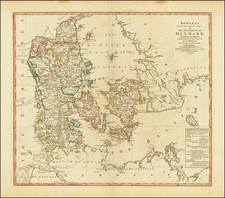Detailed map of the island of Fyn and environs, descrbing the Battle of Nyborg, fought in 1659, during the Dano-Swedish War.
The Dano-Swedish War of 1658-60, was a war between Denmark-Norway and Sweden. The Swedish king Charles X Gustav, desired to add the province of Royal Prussia in Poland to the Swedish realm, but his position in the region was not strong enough with the opposition of Brandenburg and Austria. However, when the Danes stalled and prolonged the fulfillment of some provisions of the earlier peace, the Swedish king decided to use this as a pretext to attack with an ambitious goal, to vanquish Denmark as a sovereign state and raze the capital of Copenhagen.
The Swedish army surrounded Copenhagen, hoping to starve it into submission. This failed when the Dutch Republic joined the conflict on the Danish side and a reinforcing fleet managed to smash its way through the Swedish naval forces in Oresund. Charles then tried a decisive assault on the city, hoping to conquer it and win the war; this plan likewise failed. Brandenburg, Poland and Austria then also joined the war against the Swedes.
The Battle of Nyborg was a battle fought between Sweden and the combined forces of Denmark, Dutch naval forces under Michiel de Ruyter, troops of Brandenburg-Prussia, and Polish-Lithuanian Commonwealth forces under Stefan Czarniecki. The battle was engaged on November 14, 1659, at Nyborg, on the Danish island of Fyn. Nyborg was the final major conflict of the Dano-Swedish War of 1658 to 1660. Swedish Imperial Field Marshal Philip Florinus of Sulzbach, leading the vanquished Swedish forces, was forced to save his own life by fleeing under cover of night. The battle is considered one of the most important Danish victories of the war.
Charles X fell ill in early 1660 and died in February of that year. With the death of the Swedish king, one of the major obstacles to peace was gone and the Treaty of Oliva was signed with the Allies (the Poland, Austria and Brandenburg). However, the Danes were not keen on peace after their recent successes and witnessing the weakness of the Swedish efforts. The Dutch retracted their blockade, but were soon convinced by the Danes to support them again. The French and English intervened for the Swedish and the situation was again teetering on the edge of a major conflict. However, the Danish statesman Hannibal Sehested negotiated a peace treaty without any direct involvement by foreign powers and the conflict was resolved with the Treaty of Copenhagen, where Sweden was forced to return Bornholm to Denmark and Trøndelag to Norway. The treaty of 1660 established political borders between Denmark, Sweden and Norway which have lasted to the present day.









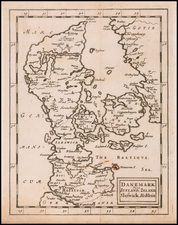
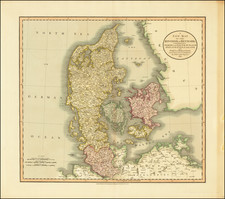
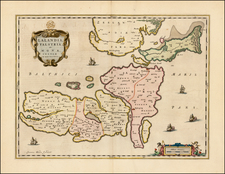
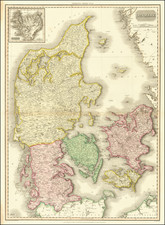
![[Denmark, Netherlands, Belgium, North Sea] Europ IIII Tab](https://storage.googleapis.com/raremaps/img/small/89170.jpg)
